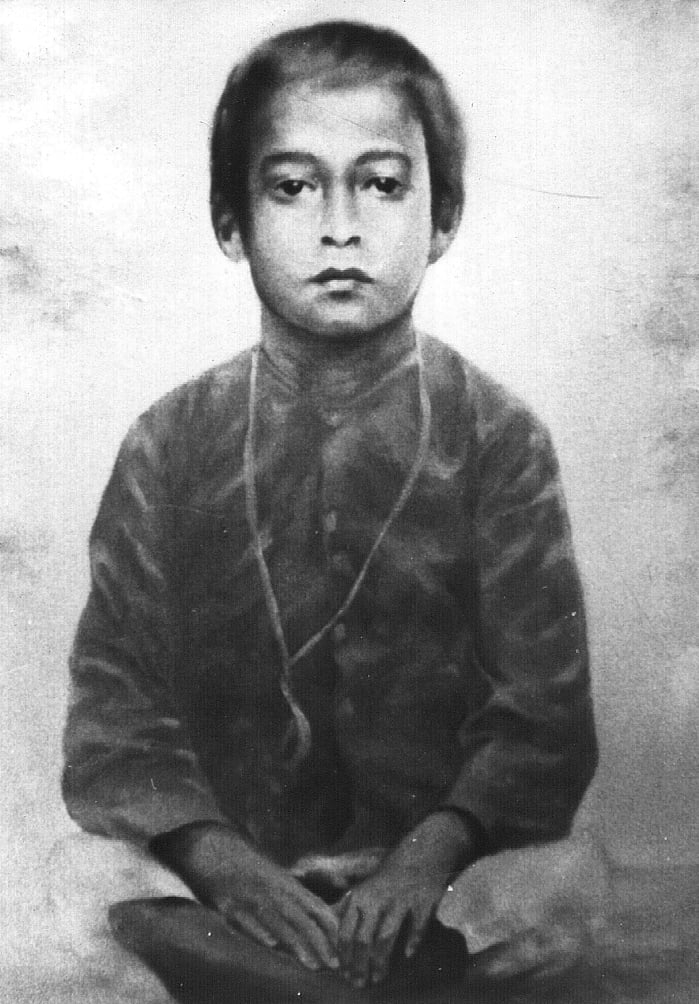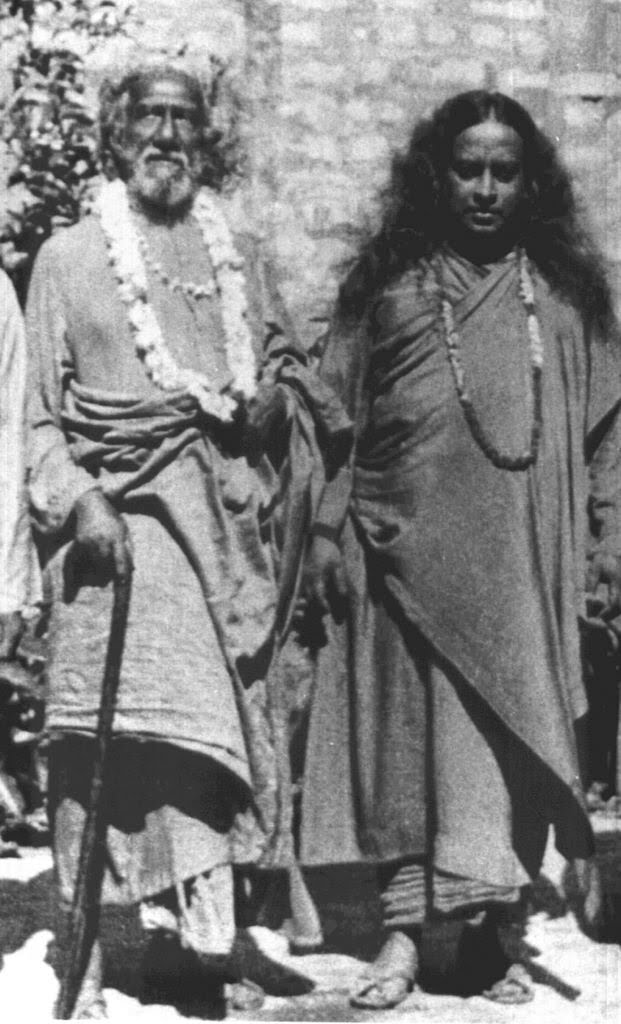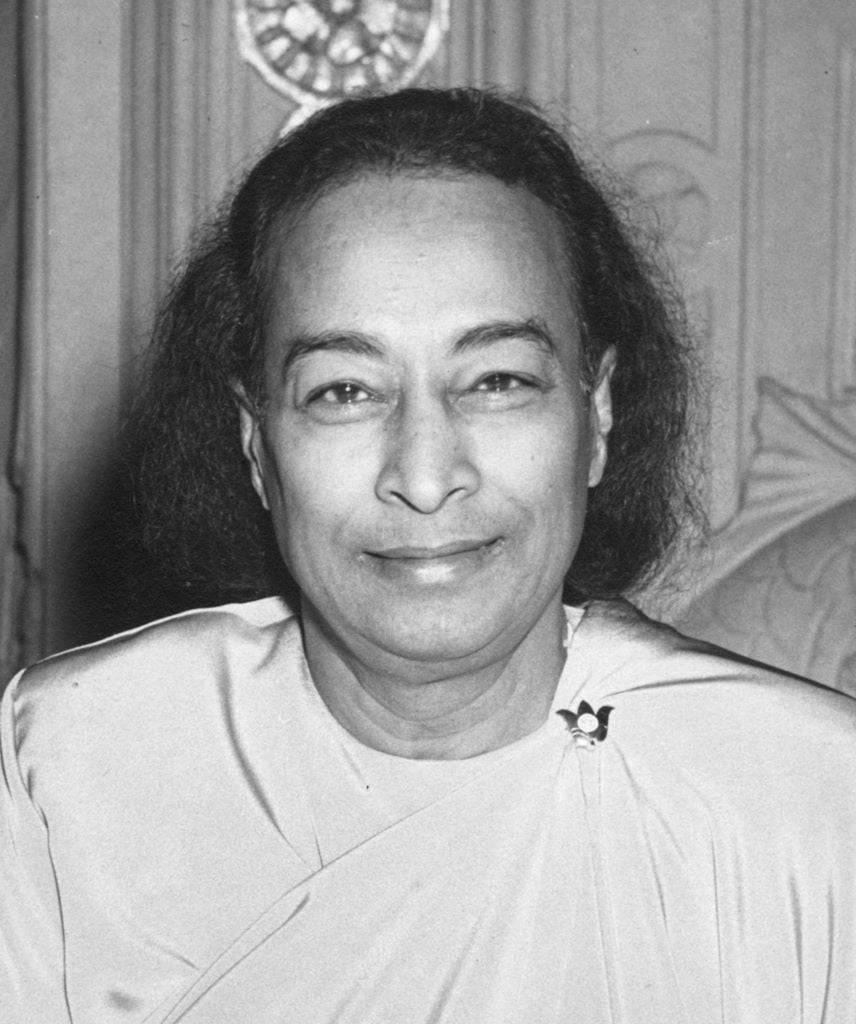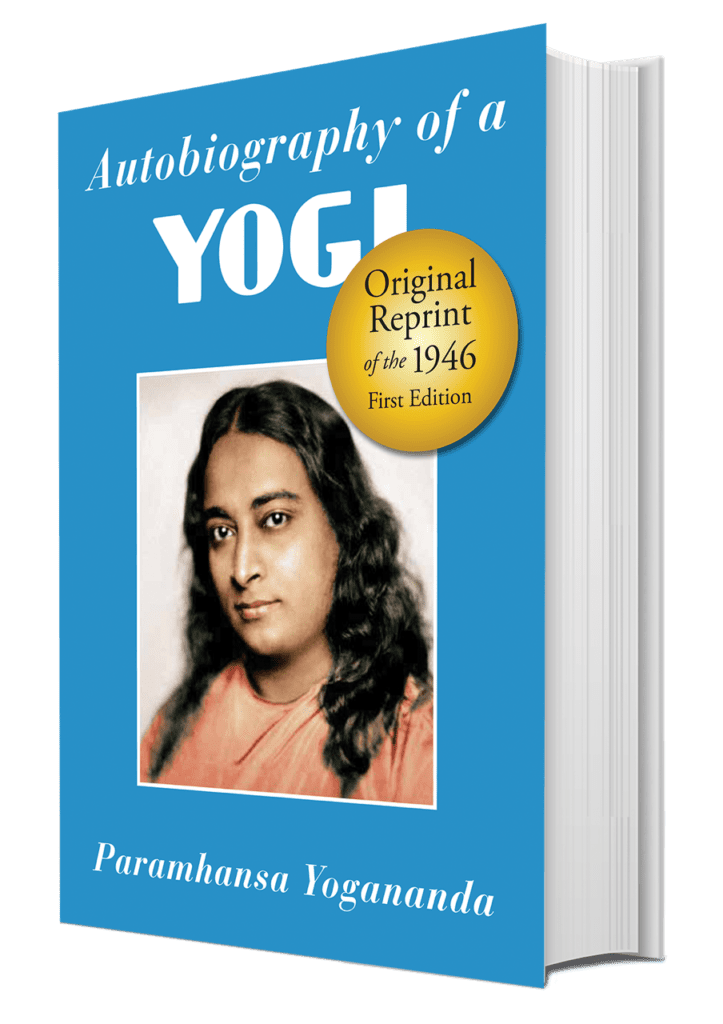
Introduction
Paramhansa Yogananda (1893 – 1952), best known as the author of Autobiography of a Yogi, was the first yoga master from India to make his permanent home in the United States. He showed how through meditation one can realize God in their daily lives as a tangible, loving reality. He taught an ancient meditation technique known as Kriya Yoga, by which one can quickly attain Self-realization.
Yogananda introduced millions to the teachings of meditation and kriya yoga in the West from 1920 until his conscious passing (mahasamadhi) in 1952.

Early Life
(1893 - 1910)
Paramhansa Yogananda was born on 5 January 1893 in Gorakhpur, India into a Hindu Bengali family. His original name was Mukunda Lal Ghosh. He was the fourth of eight children.
Both his parents were spiritual and disciples of the great master of yoga – Lahiri Mahasaya.
While he was still an infant, his mother took him to seek the blessings of her Guru. While blessing the little Mukunda, Lahiri Mahasaya said to his mother, “Little mother, thy son will be a yogi. As a spiritual engine, he will carry many souls to God’s kingdom.”
From earliest childhood, the young Mukunda displayed an intensely spiritual disposition. His favourite pastime was visiting saints, and his spiritual quest eventually led him to his guru Swami Sri Yukteswar Giri of Serampore, India.
His mother passed away when he was about 11 years old, and soon after he had a vision of Divine Mother, who said, “It is I who have watched over thee, life after life, in the tenderness of many mothers!” Divine Mother remained the center of Yogananda’s devotion for the remainder of his life.

Discipleship
In Yogananda’s autobiography, he described the first meeting with Sri Yukteswar (his guru) as a rekindling of a relationship that had lasted for many lifetimes:
“We entered a oneness of silence; words seemed the rankest superfluities. Eloquence flowed in soundless chant from heart of master to disciple. With an antenna of irrefragable insight I sensed that my guru knew God, and would lead me to Him. The obscuration of this life disappeared in a fragile dawn of prenatal memories. Dramatic time! Past, present, and future are its cycling scenes. This was not the first sun to find me at these holy feet!
Under his guru Swami Sri Yukteswar’s training Mukunda attained, in the amazingly short period of six months, the high state of samadhi, or unconditioned oneness with God.
Sri Yukteswar initiated Mukunda into sanyas in 1914, the heretofore Mukunda became Swami Yogananda. After a few years, Sri Yukteswar bestowed Yogananda with a further monastic title – Paramhansa.
Sri Yukteswar met Babaji, the guru of Lahiri Mahasaya, in 1894. Babaji told him that one day he would send Sri Yukteswar a disciple who would share the teachings of yoga in the West. This disciple turned out to be Paramhansa Yogananda.
It was Jesus Christ who appeared to Babaji in the Himalayas and asked him to send this message to the West. ‘My followers,’ he said, ‘are doing good work, but they are forgetting inward communion with God. Together let us send someone to the West to teach them the art of meditation.’
At Babaji’s behest Sri Yukteswar trained Paramhansa Yogananda for his spiritual mission in the West.

Spiritual Mission
(1920 - 1952)
Yogananda established the Brahmacharya Vidyalaya in Ranchi, India in 1916. The school was financed by the Maharaja of Kasim Bazar and fulfilled Yogananda’s ideal of all-around educational, physical, and spiritual training for the youth of India.
While meditating in his school one afternoon in 1920, Yogananda experienced a Divine Vision, a summons to commence the mission foretold by his Gurus: taking the sacred yoga teachings of India to the West.
Before embarking on his mission to the West in 1920, he received this admonition from his guru, Swami Sri Yukteswar: “The West is high in material attainments, but lacking in spiritual understanding. It is God’s will that you play a role in teaching mankind the value of balancing the material with an inner, spiritual life”.
Soon Yogananda left for Boston, there to speak as India’s representative at the International Congress of Religions Liberals.
Further, he proceeded to travel throughout the United States on what he called his “spiritual campaigns.” Hundreds of thousands filled the largest halls in major American cities to see the yoga master from India.
In 1925, he founded a spiritual organization called Self- Realization Fellowship. He also started many centres and today there are many around the world.
A prolific writer, Yogananda also shared the yoga precepts with his pen. Among his writings are original commentaries on the Bhagavad Gita, the Christian Bible and The Rubaiyat of Omar Khayyam, and books on the art and science of chanting, prayers, and healing affirmations.
In 1946, Paramhansa Yogananda wrote his best-selling spiritual classic, Autobiography of a Yogi. It has since sold over 5 million copies and been translated into at least 34 languages.
His mission, he often stated, was “the interpretation of the scriptures and the dissemination of Lahiri Mahasaya’s meditation technique of Kriya Yoga.”
Yogananda continued to lecture and write up to his passing in 1952.

Mahasamadhi (1952)
Yogananda devoted his later years to the personal training of disciples who would carry on his message after his passing. Among these disciples was Swami Kriyananda, who founded Ananda in 1969 to share Yogananda’s teachings and to fulfill his vision for Spiritual Communities.
It was March 7, 1952, a banquet at Biltmore Hotel in Los Angeles, California in honor of India’s ambassador to the U.S., Binay R. Sen.Paramhansa Yogananda left his body just after reciting a poem that he had written – My India. It was a fitting setting, for Yogananda himself had served as India’s Spiritual Ambassador to the West for thirty-two years.
The Autobiography Of A Yogi
Yogananda’s best-known work today is the Autobiography of a Yogi. It is still considered as a spiritual masterpiece and acclaimed by prominent men from many fields. The book has inspired and continues to inspire millions with a vision of their own innate Divinity.

Only rarely does a sage of Paramhansa Yogananda’s stature write a firsthand account of his life experiences.
Childhood revelations, his visits to saints and masters of India, the years of training he received in the ashram of his guru, and long-secret teachings of Self-Realization are all made available to everyone.
Followers of many religious traditions have come to recognize Autobiography of a Yogi as a masterpiece of spiritual literature. Yet for all its depth, it is full of gentle humor, lively stories, and practical common sense.
Readers' Impression

It’s FREE!
From An Affiliated Store
*This is a verbatim reproduction of the original 1946 edition, with only the original unedited words of its author. Later editions introduced hundreds of editing changes to Yogananda’s words.

